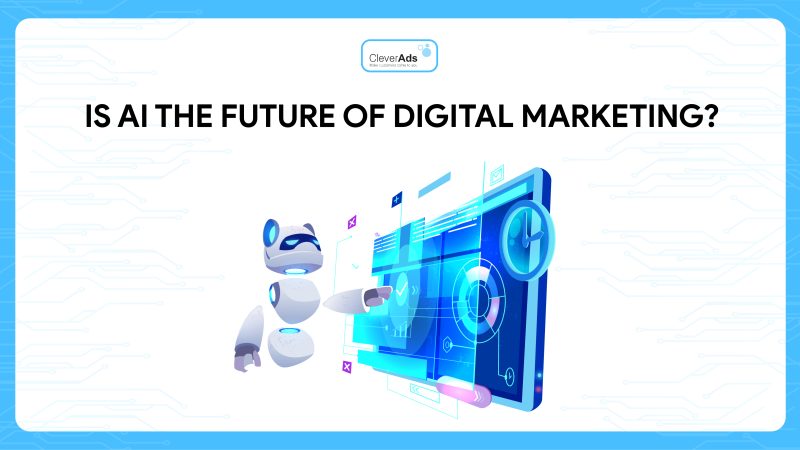Marketing Channels: Everything You Need To Know

Marketing channels have a unique role in bringing products to penetrate, satisfy the market and influence marketing decisions. Let’s find out more about them with CleverAds!
1. Concepts
Marketing channels (distribution channels) are sets of independent and interdependent businesses and individuals bringing goods from producer to consumer.

2. Classification of marketing channels
Marketing channels are divided into four types: traditional channel, vertical channel system, horizontal channel system, and multi-channel system.
2.1. Traditional channel
Channel participants include a group of independent businesses, and they only care about their interests and do not care about other members in the channel.
This system often does not have a common goal. Therefore, channel members are prone to solid conflicts with each other, and tasks and relationships in the channel could be more sustainable.
Despite many shortcomings, this type of channel structure is still the most popular, often adopted by small and medium-sized companies.
2.2. Vertical channel system
Vertical Marketing Systems (VMS) are distribution channels where intermediaries cooperate closely, professionally, and regularly with manufacturers according to a marketing strategy to achieve efficiency, maximum distribution, and marketing influence.
There are three types of vertical distribution channel systems including:
- Group VMS (Corporate VMS): systems under the control of the same owner. Other members of the system acknowledge and respect this dependence. All cooperation and conflict resolutions are made through conventional organizations. In Vietnam, the petroleum corporation organizes its distribution system in this way.
- Contractual VMS: a system consisting of independent facilities at many stages of production and distribution linked together through a contract to agree on an operation program to achieve many marketing benefits. Depending on the type of contract, the system has three types: voluntary chain of retailers under the auspices of wholesalers (voluntary chain), cooperative organizations of retailers, and VMS channels of distribution contracts franchising.
- Managed VMS: no binding contract, but based on the size and influence of one channel member on others to achieve coordination at successive stages of production and distribution. For example, Pepsi works with a retailer by providing supplies such as tables, chairs, signs, and umbrellas without a formal contract.
2.3. Horizontal channel system
A type of distribution channel that has thrived in recent years, in which two or more businesses on the same level of the system work together to perform distribution work and seize marketing opportunities.
Compared to that company conducting sales activities alone, this association helps companies to combine financial, production, and marketing resources to sell better.
2.4. Multi-channel system
The emergence of multiple market segments leads a company to use two or more distribution channels to reach two or more market segments.
Example: The Disney Channel started by producing TV shows and worked on building a loyal audience. Then, when the community size has reached a certain level, they put more products (toys, books, stories, etc.) into the service system and promote sales. Then they built up their chain stores. The Disney TV channel is an excellent example of a multi-channel strategy.
3. 5 effective online marketing channels for businesses
3.1. Email Marketing
In creating a list of potential customers and building a marketing strategy, businesses will collect information such as phone numbers, email addresses, and even the right to send news and updates through customers’ emails.
One of the most effective online marketing channels is email marketing. Most businesses use email marketing. Up to 66% rate Email Marketing as a great tool to increase business ROI.
Some examples of emails sent are:
- Branding Emails
- Converted emails and newsletters.
Currently, CleverAds has a Google Workspace implementation that provides businesses with email according to their business domain (Example: [email protected], where “name” is an optional name and “tencongty.com is the domain name of the registrar”) and a set of utility tools to increase work efficiency.
3.2. SEO – Search Engine Optimization
Users often have the habit of going to search engines like Google or Bing to look up information, which is fertile land for marketing.
SEO pushes website rankings to the highest possible tags on search engine results pages. Increased rankings will help the web generate organic traffic with a significant ROI.
Some SEO activities include:
- Keyword research
- Leverage on-page and off-page optimization.
- Organic link-building and other relevant content-building activities
3.3. Websites and Blogs
For online businesses, the company website can become the primary distribution channel for products and services. Therefore, the website can be used as an advertising tool. Marketing automation tools can be used to deliver custom homepages, and sales copy depending on the visitor’svisitor’s origin from the information gathered about the buyer.
3.4. Social media marketing
Social media is one of the most cost-effective marketing channels by providing exciting and informative content that drives engagement. The number of Social Media Marketing users continues to increase every day. Besides, they create a multi-way interaction between businesses and potential customers, allowing companies to participate in conversations about their niche and position themselves as an authority.
3.5. Content marketing
It will be a significant omission if businesses do not use this marketing channel. Content is always the center of every marketing campaign and is the most attractive and attractive factor for customers. Engaging content will bring businesses a large amount of traffic. Besides, it also helps retain and expand the customer file, so this is a vital marketing channel.
4. Marketing channels’ roles
Contributing to satisfying the target market’s needs, making the product available at the right place at the right time to serve consumers. The distribution also contributes to enhancing market coverage and bringing products to market.
Helping businesses strengthen linkages in production activities with customers and intermediaries and deploy marketing activities to satisfy market demand better.
If used correctly, it is a competitive advantage.
As part of the marketing mix, channel decisions influence other marketing decisions. Decisions about distribution channels often involve long-term commitments to other businesses, which are difficult to change. Therefore care must be taken when designing the channel for a lasting effect.
General function: Helping businesses bring products to consumers at the right price they can buy, in the right category, at the time and place they require.
Specific functions: Information, promotion, negotiation, physical distribution, Establishing relationships, Financing, risk sharing, connecting supply and demand
5. Principles for choosing marketing channels
Each company has its requirements in the channel policy. Typically, the company controls channel policies according to the following criteria:
- Channel strategy planning process
- Policy towards non-traditional channels
- Measure the effectiveness of the channel
- Price by channel
- Select and acquire distributors
- Distributor management and distributor performance measurement
- Customer movement
6. Marketing channels development strategies
6.1. Identify the right channel
Identifying and analyzing the right channels that work well for the product is a prerequisite for developing a distribution channel strategy. Can your products be sold directly or through wholesalers and retailers? What is the nature of the distribution channel? Determining the right goals and directions will help businesses determine the number of factors needed to participate in selling products. The shorter the channel, the higher the profit of the company. Therefore, many businesses entirely omit the wholesale option.
6.2. Analyze the target customers to target
Besides determining the right marketing channels, it is also essential to consider the customer audience. From what customer needs are to how they access your products, all will be valuable sources of data for businesses to help you choose the right distribution channel. However, companies will not immediately receive clear and regular data. Businesses must constantly learn information from audience analysis, testing, and learning.

6.3. Evaluate and adapt
There will be channels that perform better, so evaluating the performance of each channel is very important to adjust and improve the strategy. There are several ways to evaluate a channel, such as using the Strategic Profit Model, critical financial performance metrics (such as return on investment and liquidity), and logistics performance metrics. Consider how effective intermediaries are in distributing your product.
To keep close relationships with buyers and sellers along the distribution channel, many businesses conduct periodic satisfaction surveys designed to gauge partner satisfaction. When brought together, these metrics provide a complete picture of the channel strategy and how it can be improved for the business.
7. Conclusion
Marketing channels help businesses strengthen linkages in production activities with customers, intermediaries, etc., deploy marketing activities to satisfy market demands better, and increase competitive advantages over competitors. However, marketing channels also significantly affect marketing strategies, so businesses must conduct careful, detailed research to achieve the best results.


